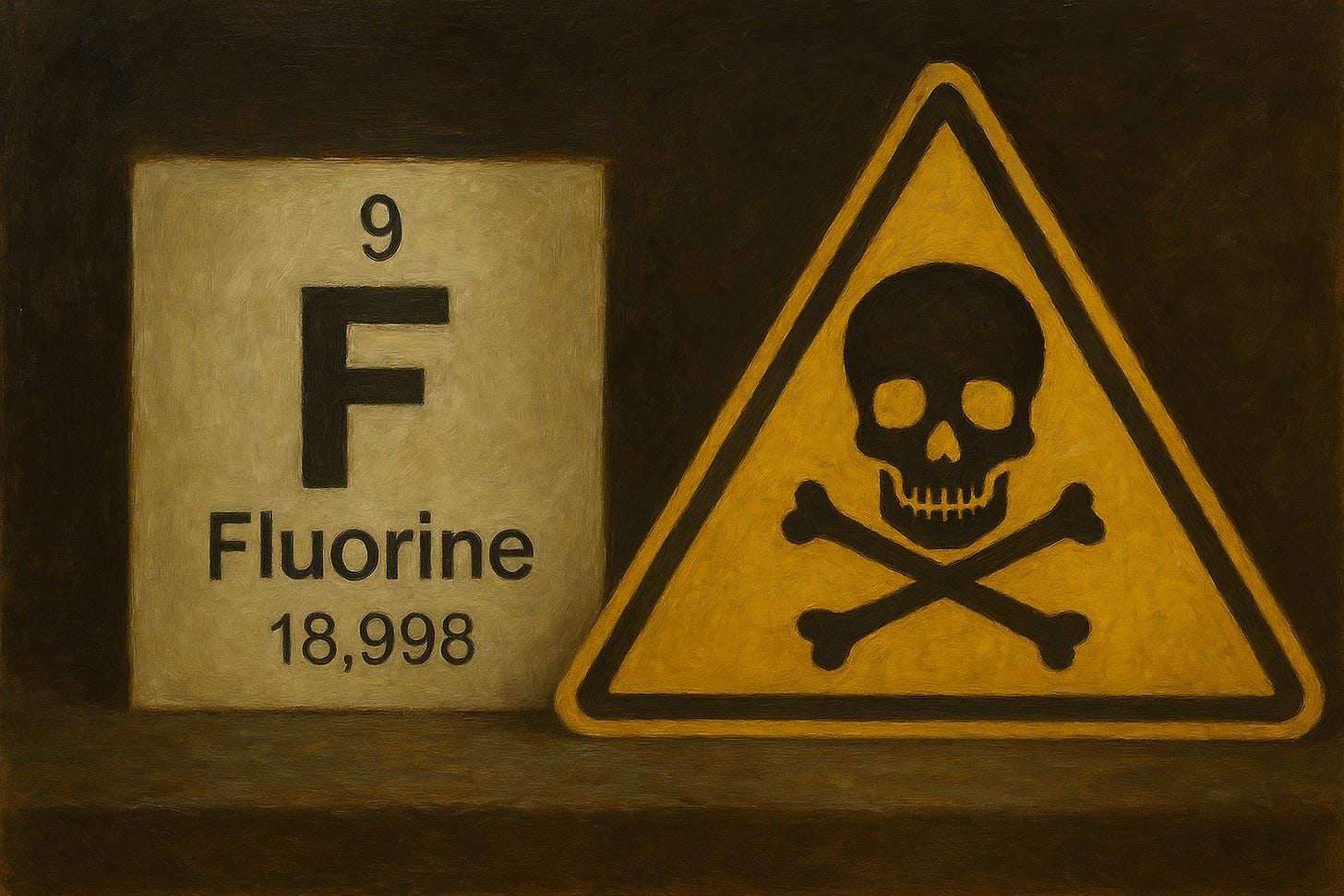How Fluoride Destroys Your Brain: Fluoride Detox Protocol
Fluoride is a known toxin, but it's added to everything. Learn how to get it out...
Struggling with low energy? I created a free guide that contains five simple, no-cost steps to improve your health in just 72 hours.
Click here and download a free “72-Hour Health Reset: 5 Free Steps” guide.
The Real Truth About Fluoride: What You Need to Know About This Toxin
Fluoride is something you’ve likely heard about your whole life, whether it’s from toothpaste ads or your dentist praising its benefits for your teeth.
But there’s a darker side to fluoride that doesn’t get much airtime.
If you’ve ever wondered what fluoride really is, why it’s in our water, food, and products, and how it could be harming your health, including your brain, you’re in the right place.
Let’s dive into the truth about fluoride and why it’s a bigger deal than you might think…
What Is Fluoride?
Fluoride is a naturally occurring mineral found in rocks, soil, and water. It’s a form of fluorine, a chemical element, and it exists in small amounts in plants, animals, and even our bodies.
On average, the human body contains about 2,600 mg of fluoride, mostly stored in bones and teeth, which is far more than what nature intended.
While it’s promoted for preventing cavities, the levels we’re exposed to through tap water, toothpaste, and processed foods are unnaturally high, and that’s where the trouble begins.
Why Fluoride Is Dangerous
Fluoride isn’t a harmless nutrient like vitamin C or magnesium. It’s a toxin that can wreck your body when you get too much of it.
Unlike other minerals, your body struggles to excrete fluoride, so it builds up in your bones, teeth, organs, and even your brain over time.
This accumulation can lead to a range of health issues, many of which you might not immediately connect to fluoride.
Here’s why it’s a problem:
Brain Health Damage: Studies have linked high fluoride exposure to cognitive problems, including reduced IQ in children and brain fog in adults.
Fluoride can cross the blood-brain barrier, potentially disrupting neurological function and contributing to memory issues or difficulty concentrating.
This is especially alarming for kids, whose developing brains are more vulnerable. Research from places like China and India, where fluoride levels in water are naturally high, shows a clear connection between fluoride exposure and lower cognitive performance.
Mineral Displacement: Fluoride displaces iodine, which your thyroid needs to regulate metabolism, energy, and hormones.
This can lead to hypothyroidism, leaving you feeling sluggish, gaining weight, or just off. It also competes with calcium and magnesium, essential for strong bones and muscles, potentially weakening bones and causing joint pain.
Skin Issues: Some studies suggest fluoride can show up in your skin, potentially triggering or worsening acne, which might explain persistent breakouts for some people.
Fluoride’s Impact on Hormones, Bones, and More
Fluoride doesn’t stop at your brain and thyroid, it can also disrupt testosterone levels in men, leading to lower energy, reduced muscle growth, and mood changes.
While it’s marketed as a tooth-strengthener, excessive fluoride can actually make your bones brittle, increasing the risk of fractures.
A condition called skeletal fluorosis, caused by long-term fluoride buildup, can make joints stiff and painful, mimicking arthritis.
These effects build up slowly, so you might not realize fluoride is the culprit.
Where Is Fluoride Hiding?
Fluoride is everywhere, and avoiding it is harder than you’d think. Here are the main sources:
Tap Water: The biggest culprit, where fluoride is added in many places to “protect” teeth. You’re exposed every time you drink, cook, or shower.
Bottled Water: Some brands, especially cheaper ones, contain fluoride.
Processed Foods and Drinks: Cereals, sodas, and juices often have fluoride, especially if made with fluoridated water.
Tea: Particularly black and green varieties, as tea leaves absorb fluoride from the soil.
Alcoholic Beverages: Some wines and beers carry fluoride, depending on processing.
Toothpaste and Mouthwash: Major sources, unless you opt for fluoride-free versions.
Fluoride’s sneaky presence means the 2,600 mg in your body can keep climbing, especially with daily exposure.
The health effects, acne, brain fog, low energy, joint pain, and hormonal imbalances, can creep up quietly, leaving you unaware of the root cause.
But there’s hope. You can take steps to reduce fluoride’s impact and detox it from your body.
The Fluoride Detox Protocol
Now that you understand how fluoride sneaks into your life and harms your health, including your brain, let’s talk about how to fight back.
Detoxing fluoride isn’t as daunting as it sounds, and with a few practical changes, you can start feeling clearer, healthier, and more energized in just days or weeks.




